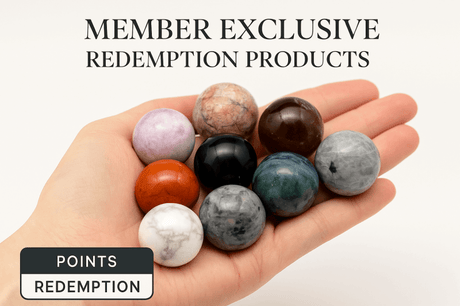One of the things that intrigued me when I first got into the industry was understanding how the minerals and crystals we have get from point A (the mining site) to point B (the consumer). The process is incredibly vast and complex, involving many different parts that often go unnoticed. Through my experience in the industry, I've come to break down and understand these stages.
In this article, I will focus on the positive side of the industry, where ethical practices are upheld. We won't delve into the dark side involving forced labor or unethical practices.
The Mining Process
First, let's talk about the mining process. Many individuals claim to have mining relationships or own mines, but this is quite rare, especially outside the US. More often than not, people lease land or have mining rights rather than owning the mines outright, which involves claiming ownership of everything within the soil—a challenging and uncommon scenario.
Mining is often a generational activity, and many large mines have been occupied for a long time. Therefore, finding new, significant mining sites is rare. Miners typically mine the material and then need to find distributors or manufacturers to buy large amounts of wholesale material.
From Miners to Distributors
The next step involves miners selling their materials to distributors. This process can be complex, especially since a lot of distributors are from countries like India or China. These distributors come to mining regions and take on the risks involved. Early in my career, I engaged in this hands-on approach, traveling to find mines and forging mining contracts by offering fair payments and ethical practices. This approach helped me gain several mining contracts over time.
Distributors often face the challenge of miners setting aside premium-quality materials, sometimes leading to missing out on the best materials. Understanding and anticipating such factors is a crucial part of the business.
Processing: Distribution to Manufacturing
Distributors handle the materials by working on them—cutting, polishing, cleaning, and sometimes carving them into different shapes. This stage often requires specific paperwork and an understanding of import-export processes, especially for international shipments.
In my case, having a manufacturing warehouse in South America and a factory in India allows a smoother and quicker operation. Most wholesalers, however, face a "ping-pong" effect, where materials are repeatedly moved between entities, increasing the complexity and cost.
Wholesale and Beyond
Once processed, the distributors work with wholesalers. Wholesale operations require proper business documentation such as a seller's permit. Unfortunately, many claim to be wholesalers without the necessary paperwork, which can complicate matters.
The general process should be: Mining,Distribution,Manufacturing,Wholesale,Retail, Consumer
In between wholesale and retail, there are often second or third-party wholesalers involved. For instance, some wholesalers buy in bulk and resell to smaller retailers or directly participate in trade shows, blending wholesale and retail operations.
The Final Journey to Consumers
Ultimately, the crystals pass through multiple hands before reaching consumers. As a distributor and wholesaler, I've always strived to minimize intermediaries to ensure the materials retain their quality and positive energy.
By going directly to the source and managing each stage carefully, we can maintain ethical standards and deliver high-quality products to consumers.
I hope this structured version helps you convey the complexity and ethics of the crystal and mineral supply chain more clearly.
